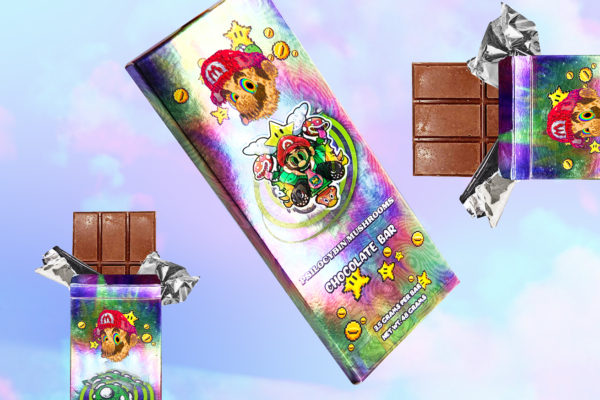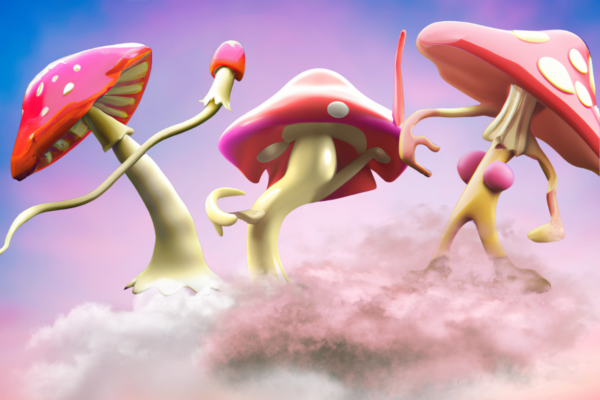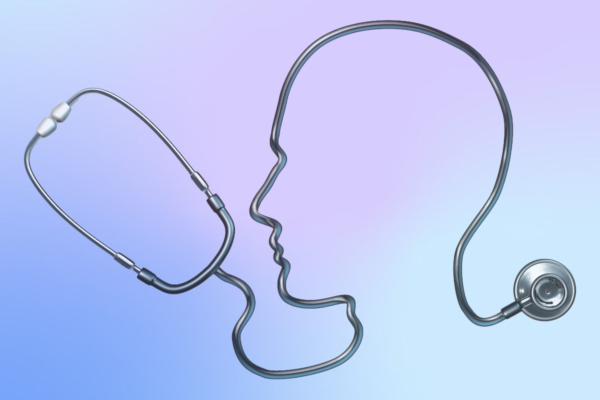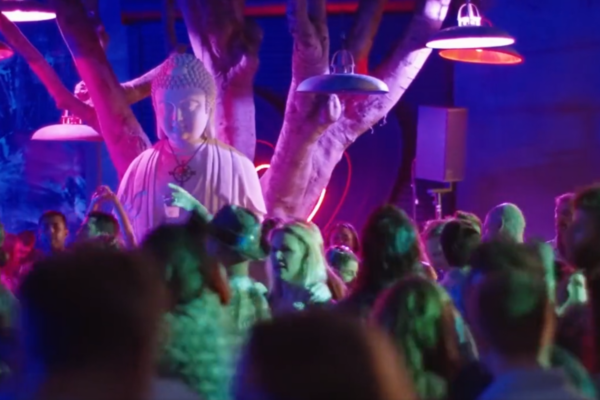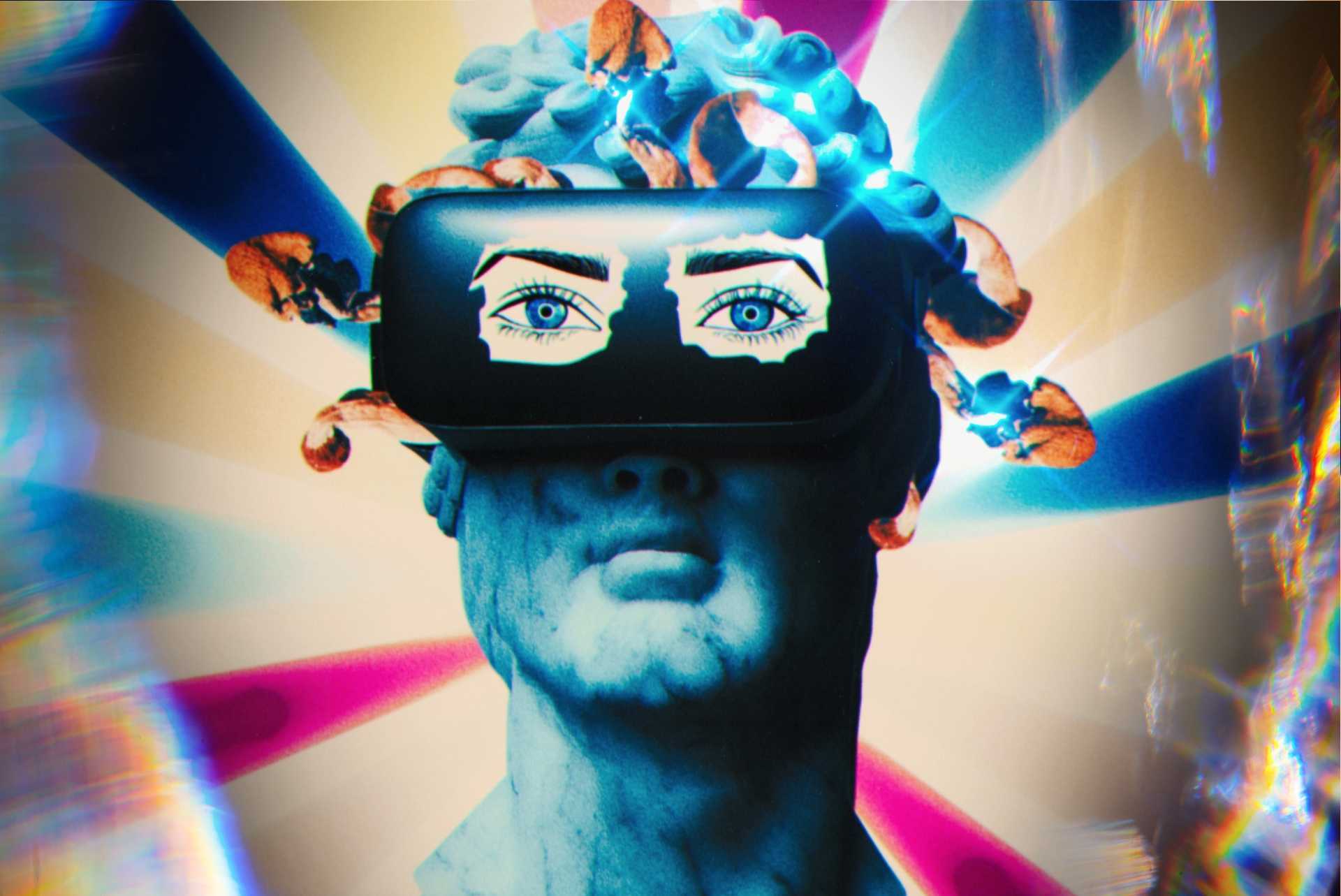
Psychedelics have been gaining momentum for their potential as a therapeutic tool, with clinical studies showing promising results in treating conditions such as depression and anxiety. Psychedelics are non-specific amplifiers, meaning the environment and mental state of the participant play an essential role in shaping the experience and ultimately determining therapeutic outcomes.
Recent studies have shown that psychedelic-assisted psychotherapy and virtual reality technologies can induce neuroplasticity and neurogenesis in the brain. Neuroplasticity refers to the brain’s ability to change and adapt in response to new experiences, while neurogenesis refers to the growth of new neurons in the brain. These processes can lead to significant changes in brain structure and function, which may help explain the therapeutic benefits of these treatments. Researchers are starting to explore the synergies of using virtual reality (VR) and augmented reality (AR) technology with psychedelics.
In what follows, we discuss the exciting synergistic applications of virtual and augmented reality with psychedelic-assisted psychotherapy.
The current problems of psychedelic therapy

Psychedelic-assisted psychotherapy typically involves three phases: (a) preparation, (b) the psychedelic experience itself, and (c)integration. Oftentimes there is a certain lack of congruence across these three phases, a mismatch or inconsistency between the location, responsible therapists and social factors in each of these phases.
Lack of congruence across the three phases of psychedelic-assisted psychotherapy could result in psychological side effects such as confusion, anxiety, and paranoia and diminish the positive outcomes over time. Carhart-Harris et al. emphasized in their thought-leading article “Psychedelics and the essential importance of context” that considering how much the environment impacts each phase of the treatment is important to consider when designing and implementing treatment.
For example, patients can face several challenges during the extensive integration phase of the psychedelic experience, which involves processing and making sense of the insights gained during the psychedelic experience and integrating them into daily life. Some common challenges include:
- Memorizing insights: Recalling insights directly after the dosing session. The insights gained during the psychedelic experience can be emotionally intense, even overwhelming and memorizing everything is simply impossible.
- Difficulty integrating insights: Patients may struggle to understand or integrate the insights gained during the psychedelic experience into their daily lives. This can lead to confusion, frustration, or feeling “stuck.”
- Difficulty communicating: Patients may struggle to communicate their experiences to others, leading to feelings of isolation or loneliness.
Finding the optimal environment for psychedelics is an important part of ensuring a safe and effective experience and therapeutic outcome. Psychedelics are non-specific amplifiers, which means they can enhance both positive and negative experiences depending on the set and setting in which they are taken.
A personalized setting can create a supportive and safe environment tailored to the individual’s needs and preferences, allowing them to fully immerse themselves in the experience and maximize the potential benefits. This may include factors such as music, art, nature, or other sensory experiences that are personally meaningful and enjoyable to the individual.
Virtual and mixed reality can potentially solve the practical problems of congruence, consistency, accessibility, efficacy, resources, individualisation, location, set/setting and overall management of psychedelic-assisted therapies.
“With VR, it’s possible to create highly customized environments that facilitate – in a person-specific way – mental and emotional states conducive to psychedelic therapy. New digital tools, for example, can (1) help patients regulate their nervous systems and enter a calm state that is conducive to the psychedelic experience (preparation), or that facilitates psychological flexibility (integration); (2) potentially help them recall their experiences and access them to a greater degree (integration); and (3) serve as a less intense version of their psychedelic experience to reduce the need for more psychedelic sessions (integration/long-term support), says Manesh Girn, PhD(c), Chief Research Officer at EntheoTech Bioscience.
Virtual Reality and Augmented Reality worlds
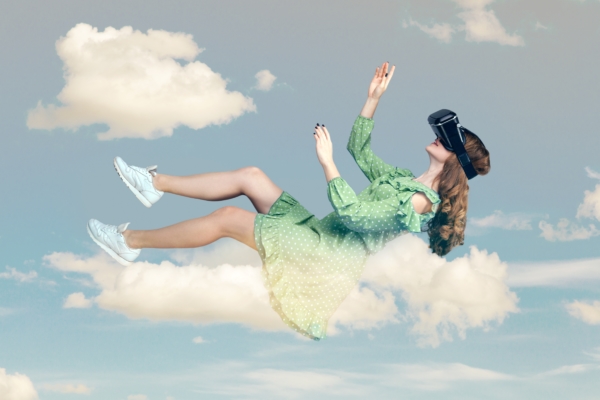
Virtual reality, augmented reality, and mixed reality are immersive computer-mediated and interactive experiences in which the user perceives and interacts with a simulated environment via a human-computer interface. In virtual reality (VR), users are completely immersed in a computer-generated environment, while augmented reality (AR) overlays digital content in the real world. The narrative nature of these technologies can help individuals feel more connected to the experience and promote deeper levels of self-reflection and insight.
You may also like: Can Virtual Reality Simulate the Effects of a Psychedelic Trip?
Virtual Reality
Virtual reality is a computer-generated environment that simulates a realistic experience. It typically involves using a headset that tracks the user’s head movements and displays a 360-degree view of the virtual environment. VR technology can create a range of environments, from realistic simulations of real-world locations to completely imaginary worlds. Artificially-induced altered perceptual phenomenology can draw from an infinite digital information source and generate specific virtual environments that can be significantly individualized for patients’ needs at any time. By leveraging the power of storytelling, these technologies can provide users with a more meaningful and impactful experience.
Like psychedelics, Georgiev et al. explains that virtual reality offers immersion and improves cognitive functions through its neurobiological effects on neuronal plasticity. VR reality exposure therapy has been used successfully to treat several disorders, such as post-traumatic stress disorder (PTSD), panic disorder, and social anxiety disorder.
Augmented Reality
Augmented reality (AR) technology overlays digital information in the real-world environment. AR technology can also track physiological changes and provide real-time feedback to patients and therapists. Overall, AR has the advantage of the patient feeling anchored in the real world since the user is not fully immersed in a virtual world. The patient’s environment is merely enhanced through virtual elements, which allows for a sense of agency.
Mixed Reality
Mixed reality (MR), or hybrid reality, combines virtual and augmented reality to create a seamless and immersive experience. It overlays elements and blends virtual and augmented reality by anchoring virtual elements to the real world.
The immersive and narrative nature of virtual reality technologies induces a sense of ownership, control, and presence that is impossible with other forms of digital media.
The commercial interest is currently predominantly sitting in entertainment, but investors and companies are focusing on those technologies to enhance the impact and accessibility of healthcare treatments.
Moroz and Carhart-Harris write that although in its infancy, a dual approach might increase the efficacy of each paradigm of psychedelic therapy due to synergistic coupling and the ability to tailor bespoke therapies for particular individuals and groups. The increased presence provided by psychedelics and the controlled sensory stimuli of virtual reality can complement each other and create synergistic interactions that increase efficacy.
Such increases in effectiveness could lead to better accessibility of psychedelic-assisted therapy to patients and a potential decrease of the dose of a given psychedelic compound with continued effectiveness, optimization and tailoring of the environment and therapeutic setting. Accessibility and economic viability are key factors for making psychedelic-assisted therapy available in future, given that the World Health Organisation (2021) estimates “approximately 280 million people in the world” to have depression; this equals 3.8% of the entire population.
#1: Before the dosing session – preparation
Psychedelic-assisted psychotherapy involves using psychedelic drugs, such as psilocybin, or LSD, to enhance the therapeutic experience. While these drugs can effectively treat various mental and physical issues, they can also be intense and overwhelming. Patients may experience strong emotions, vivid hallucinations, and altered perceptions of reality. This can be challenging for some patients to comprehend and will stop some from pursuing psychedelics-assisted therapies.
Virtual and augmented realities can induce self-transcendent experiences and simulate the psychedelic experience as a non-drug technology. VR technology can help patients understand what to expect during the therapy session.
Glowacki et al. describe a virtual reality framework called ‘Isness-distributed’ (Isness-D) that enables groups of participants to co-habit a shared virtual space and experience their bodies as luminous energetic essences with diffuse spatial boundaries. This framework allows for moments of ‘energetic coalescence’. It can be used to design, what they call, self-transcendent experiences where people dissolve their sense of self in connection to others. The authors accent the potential of VR technologies to design intersubjective experiences where people dissolve their sense of self in the connection to others.
VR experiences can simulate altered states of consciousness, such as feeling disconnected from the body or experiencing time in a non-linear way. This can help patients feel more prepared and less anxious about the experience.
Enosis Therapeutics has completed the world’s first study on the synergistic application of VR and psychedelics, which was conducted in the Netherlands and collaboration with Swinburne University and the Psychedelic Society Belgium. The primary results showed that their VR technology reduced pre-session anxiety during the preparation session.
#2: Reducing anxiety during the onset
Both VR and AR technology can provide patients with a sense of grounding during the onset of the session, helping them manage anxiety or fear. These technologies can create personalized visualizations to help patients process their emotions and thoughts.
Any such experience can be tailored to the patient’s needs and preferences before the session, providing a personalized and familiar experience and conveying a sense of safety and agency.
For example, AR overlays can visualize a cloud that changes color based on the patient’s mood, easing the patient into surrendering to the experience. VR can also simulate natural outdoor environments such as a beach or forest, which can help patients feel more connected to nature and promote positive emotions. Ulrich’s Stress Reduction Theory (SRT) explains that natural elements create positive emotional and physiological reactions, ease our state of alertness, and reduce mental fatigue. Nature-based settings have their challenges for psychedelic therapy, but technology has the potential to bring elements of it through calming visuals and sounds into an indoor setting. This, in combination with breathing exercises or guided meditations, potentially helps patients manage anxiety or fear at the beginning of a session.
Stepanova et al. ran an experimental study, setting up the VR installation “AWE”, where participants were immersed in a virtual world. They report that the forest environment was mostly perceived as safe and comforting. However, in a few cases, the same forest was considered scary, and users felt anxious and nervous. Such contradictions indicate that experiences are very individual and personal, as are the reactions to different elements, natural or virtual. This has to be factored into the design process of the environment and the therapy protocol. The slightest changes in light, visuals, or sound profoundly impact the user, especially under the influence of psychedelics.
For example, MR technology can be used to co-create with the patient a virtual environment that mimics their favorite place, such as a beach or forest. This can help patients feel more comfortable and at ease.
#3: Come Down
VR and AR technologies can also support patients during the comedown of a psychedelic experience. After the peak of the psychedelic experience, patients may experience various emotions, including confusion, anxiety, and disorientation. VR and AR technologies can create a calming and relaxing environment for patients to return to reality as they come down from experience.
In theory, a mixed reality psychedelic-assisted psychotherapy space meets reality and virtuality halfway. After the compound starts to wear off, the patient could use MR to reenter the previously created virtual world. This might help a patient transition from the altered stage back to ordinary consciousness, having a potentially gentler comedown phase. The therapist could also wear augmented reality glasses and join the patient’s personal landscape.
This can help patients feel more grounded and connected to reality, reducing the risk of an adverse reaction. Additionally, functions such as journaling, responsive AI and biofeedback will continuously improve the treatment experience and potentially allow for direct and live measuring of the treatment effects.
#4: After the dosing session – integration
As previously mentioned, psychedelics promote neuroplasticity; therefore, integration during this period and after might be most important to encode lasting changes in brain structure and function. Calder and Hasler discuss the effects of psychedelics on neuroplasticity, including the “window of plasticity” during which lasting changes in brain structure and function can be encoded. Changes in neuroplasticity have been observed starting 1-6 hours after stimulation with psychedelics, and increased synaptic and dendritic density has been observed at 72 hours post-treatment in multiple studies. Research has also uncovered changes in brain function which lasted at least one month after treatment with psilocybin.
Consequently, the long-lasting effect of psychedelics, even after the dosing session, emphasizes the enduring vulnerability to set and setting. In therapy, narrative in VR and AR can be used to create a safe and supportive environment for exploring and processing emotional or psychological challenges. Personalization also allows for consideration of the individual’s unique physical and emotional needs, including any medical conditions or sensitivities.
Agnieszka Sekula, co-founder of Enosis Therapeutics told us, “Participants indicate that through the application of Anchoring VR™ on the day after the dosing session, participants were reminded of their psychedelic-induced insights, which they had started to forget even one day after the dosing session. Given that one of the main challenges faced by therapists and patients engaged in psychedelic-based treatments is the elusive nature of psychedelic insights, offering patients a tool that can reconnect them with those insights augments the therapist’s capacity to support and guide the process of integrating them into tangible, real-life outcomes.”
Other technologies like SoundSelf by EntheoDigital build on the ancient and transformative practice of chanting, using sounds and light therapy, supporting surrender practice and “psychedelic memory reactivation” without a fully immersive VR experience. EntheoDigital writes that “the intensity of psychological release is greater than a guided meditation or breathwork session but less than a full journey using classical psychedelics like psilocybin.”
Limitations
Not everyone is technologically savvy, and these technologies might feel alien to some, thus adding another obstacle to the already novel treatment with psychedelic compounds. Additionally, the current state of hardware to use these technologies effectively is still in its infancy, with the visual quality and the device’s weight playing into the experience.
Moreover, the investment needed to build essential infrastructure for the application of these technologies in clinics is going to be considerably high, especially since treatment protocols have to be designed and tested, to begin with, as well as safety and hygiene protocols.
Finally, the potential side effects of mixed reality therapy have yet to be researched in detail for risk and harm reduction.
Conclusion
Virtual, augmented, and mixed-reality technologies have the potential to revolutionize the field of psychedelic-assisted psychotherapy. These technologies can make the treatment more effective due to their complementary nature; it opens the possibility to deliver tailored protocols, increase the accuracy of dosing, achieve the same therapeutic effects with lower dosing and make treatments accessible to a broader range of patients in various circumstances.
Currently, the standardization of the treatment protocol and caution regarding potential patents of technological developments of software and hardware will make it difficult to run studies and compare data.
“Conceptually, there is a large number of potential methods of utilizing VR to improve PP. However, we cannot evaluate their appropriateness until they are tested and validated through robust scientific research. However, we would like to see VR inspire a more robust exploration of therapeutic approaches and constantly allow us to keep reiterating things as we learn more about mental health, human nature and consciousness.” – Agnieszka Sekula, PhD candidate and Co-founder of Enosis Therapeutics.

